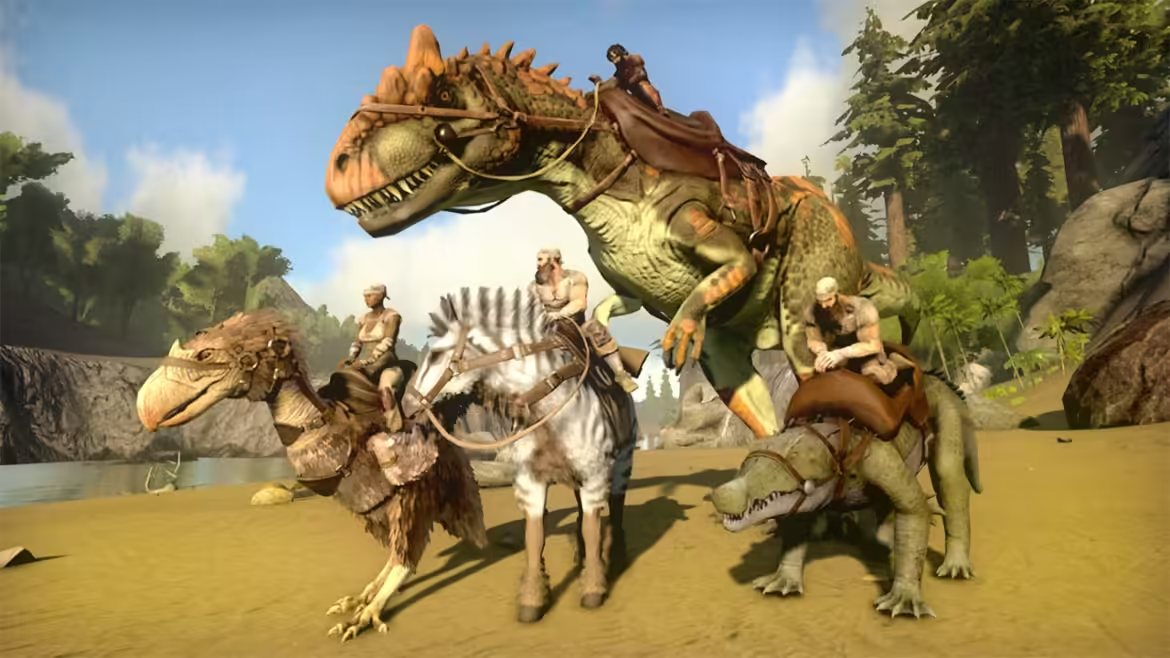Ark: Survival Evolved is a hugely popular open-world survival game where players find themselves stranded on a mysterious island filled with dinosaurs and other prehistoric creatures. In this guide, we explore some of the critical aspects of ark: survival evolved and provide tips to help players survive in this dangerous game world.
What is Ark: Survival Evolved?
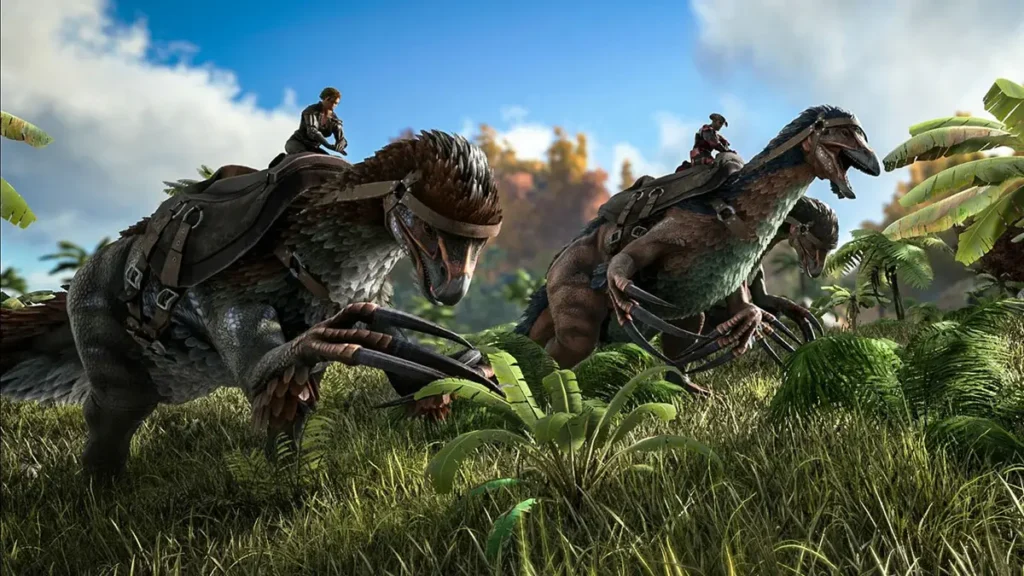
Ark: Survival Evolved places players on one of several randomly generated islands filled with dense jungles, ocean territories, volcanic regions, and more. Players spawn into the game with minimal resources and equipment, requiring them to gather quickly and craft tools, weapons, shelter, and clothing to endure the many challenges. The main goal is for players to not only survive but thrive by taming and breeding dinosaurs, farming resources, exploring caves and ruins for rare artifacts, and building settlements with others.
The game features over 100 dinosaurs and prehistoric creatures that players can both battle against and tame to use as mounts or helpers. Environments range from lush tropical areas to cold, icy climates, all harboring threats like carnivorous dinosaurs, dangerous fauna, hazards, and other players. The key to thriving in Ark is teaming up with others in collaborative tribes to share resources while also battling competing factions.
The Basics of Surviving in Ark
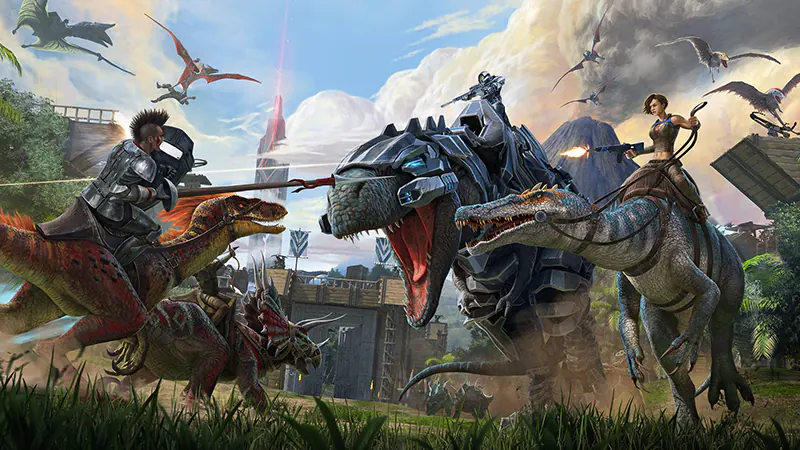
Players’ priority when starting ark: survival evolved is gathering essential resources like fiber, stone, flint, and thatch to craft simple tools, weapons, and shelter. Some key things new players should focus on are:
- They are gathering stones and flint to make a basic pickaxe and hatchet. These allow the gathering of wood, fiber, and other resources.
- I am crafting a stone sickle for faster fiber and mushroom gathering. Fiber is used for crafting clothes and bandages for healing.
- I am building a small thatch hut or raft shelter as protection from the elements and predators at night.
- Crafting a bow and arrows for hunting smaller creatures like dodos, phobias or pterosaurs for meat and hide.
- They are creating a mortar and pestle for crafting narcotics from narco berries. Narcotics are used for taming.
- I was exploring the island on foot or tamed dino mounts to discover cave drops and locate an excellent permanent base location.
- Prioritize skill points in movement speed, crafting and weapon damage early on for greater survival chances.
As players progress, they can build stone shelters and craft metal tools, weapons, armor, and saddles. Taming allows mounting dinosaurs as powerful mounts or helpers like parasaurs for carrying or stegosaurs for protection.
Critical Threats and How to Deal With Them:
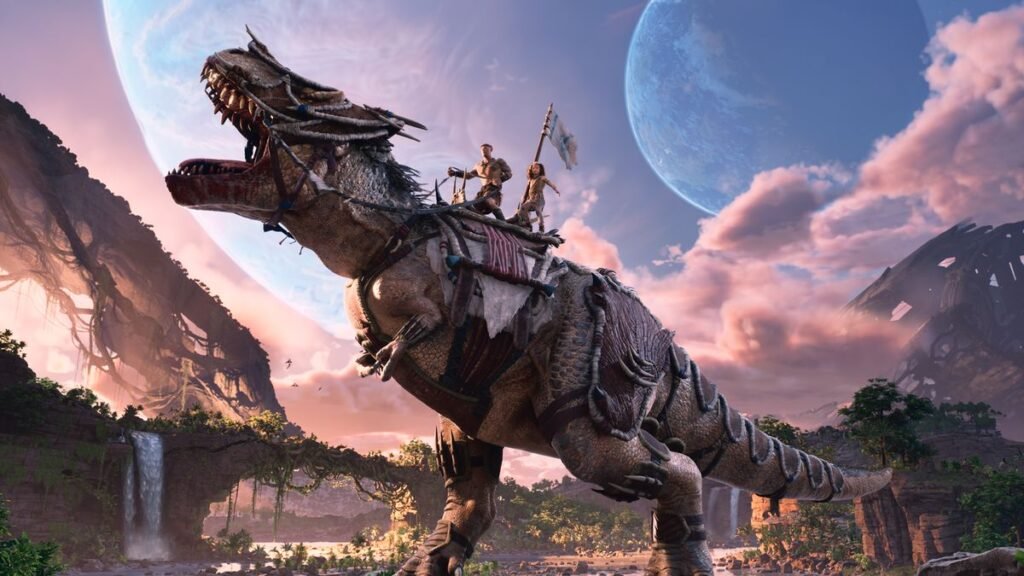
- Small carnivores: Fight early encounters, run away, or use bolas and slingshot knockouts to tame.
- Larger carnivores: fight safely in numbers, build spike walls, or use ranged/mounted hit-and-run tactics. Bola helps restrain them.
- Therizinosaurus: deadliest carnivore with claw attacks. Avoid encounters or fight from range if possible.
- Dilophosaurus: deadly venom spit, build shelter, or fight on mount with shield hat.
- Sabertooth Salmon: only found in rivers, decent food/hide but watch for pack attacks.
- Megalodons, Mosasaurus: sea-dwelling predators, build rafts/boats with spike defenses or stay near the shore.
- Heat/Cold: craft appropriate armor, torches, or fires to provide a warming buff in frigid zones.
- Dehydration: prioritize well placed water skins and drink often in hot areas.
- Starvation: always carry a total stock of raw meat or cook it for efficiency. Plant species/vegivores help, too.
- Fall Damage: Use a parachute if available or time jumps to reduce landing damage.
So, in summary, players need to maintain their character’s food, water, temperature, and health while also being prepared to either avoid or combat the various threats around every corner of the islands. Careful resource management and building up defenses over time is critical to long-term survival.
10 Tips for New Ark Players:

- Prioritize solo survival essentials before fancy buildings or fancier items. Staying alive comes before luxury.
- Always carry extra clothes, weapons, tools and some basic crafting materials for repairs in case of losses.
- Place storage boxes and preserving bins around for safe, decentralized resource storage.
- Befriend other players when possible for increased success, safety, and broader access to resources.
- Specialize character’s skills and tames for focused roles like combat, crafting, harvesting, or taming.
- Tame lower-level, safer dinos/creatures first for practice before taking risks with high-level versions.
- Avoid angering larger predators unless well prepared in a group. Hit & run tactics work better than standing fights.
- Build small hidden secondary shelters as fallback positions or decoys in case the main base is raided.
- Thoroughly explore the island edges and note valuable resource zones, hazard areas, and good base locations.
- Continually upgrade gear, build fireplaces, and place beds for respawning closer to death sites. Complacency leads to losses.
Taming Dinosaurs and Other Creatures in Ark
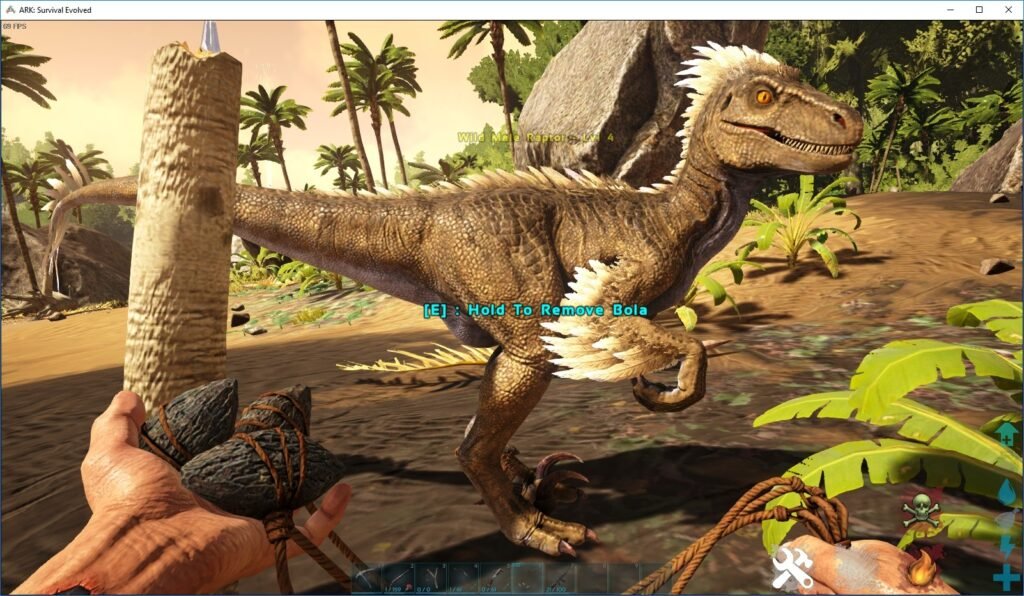
Once players have established their first foothold on the island through essential resource gathering and crafting, the following primary goal is to begin taming dinosaurs. Taming allows players to have powerful allies to fight alongside them, as well as means of faster, more protected transport. Some tips for successful taming include:
- Each creature has its preferred food for taming. Research these and gather the proper food type in advance.
- Knock out the creature first using ranged weapons like a bola, slingshot, or arrows before attempting to tame it. Torpor reduces as it eats, so timing is crucial.
- Build or place sleeping bags nearby in case of mishaps during taming where players may die. This avoids significant setbacks.
- Begin force-feeding the creature its preferred taming food immediately once unconscious to maximize taming effectiveness.
- Station yourself safely nearby and continue force-feeding at regular intervals to keep your torpor high until fully tamed.
- Lower-level creatures are more accessible to tame, but high levels result in better stats. Weigh risk versus reward based on abilities.
- Team up with others for more success, taming giant, dangerous creatures. Multiple people can more easily KO and monitor the torpor levels.
- Tame smaller early creatures like pterosaurs, trikes, and dildos first for practice before riskier raptors or rexes. Master the basics.
- Build or place beds near tames in progress for safe respawning if something goes wrong during the taming process.
Finally, here’s a list of some commonly tamed creatures in Ark and their main uses:

- Parasaur – good early transport, high carry weight.
- Trike – decent combat and harvesting with its club tail.
- Dilo – packs are valuable to combat allies in numbers.
- Pteranodon – first helpful flyer, excellent mobility, and scouting.
- Argy – most robust flyer, highest weight carry and utility.
- Ankylo – best harvester of metals like flint, stone and crystal.
- Doedicurus – harvests thatch, wood, and fiber high-speed.
- Stegosaurus – mobile spiked armor protection and medium-weight carry.
- Rex – ultimate land predator, mighty hunter, and base defense.
- Spino – swamp dwelling, best mid-game combat mount until rex.
Following these guides and prioritizing surviving the early game, careful taming helps players thrive long-term in Ark’s dangerous open world. These tips provide a good starting point!
Surviving in Different Ark Biomes and Territories

ark: survival evolved features diverse biomes, from dense jungles to frozen wastelands, each with their opportunities and threats. Adapting gear, tactics, and tames to the different regions maximizes survival chances. Here’s an overview of some critical territories:
The Beach – Starting zone but very exposed with few resources. Build a raft and explore inland quickly.
Tropical Island – Lush forests but hot. Pack water and hide from more giant dinos under tree cover when possible. Spiders are a significant threat at night.
Volcanic – Harsh, rocky terrain with magma spawns and dangerous flyers. Craft chitin flak armor carries a shield—good rare resources.
Snow Biome – Extreme cold, craft fur armor/gloves. Wooly rhinos and yetis appear. Place campfires and build foundations to stay warmer. Rich metal zones.
Redwood Forest – Dense fog and powerful megafauna. Carry a light pet to ward off Troodon madness debuff. Watch out for giant leeches in lakes and swamp gas.
Desert: Scorching heat and dehydration are a danger—place water jars in wells. Build stone structures. Velociraptors and snakes are shared here.
READ MORE > https://squidward.co.uk/ark-survival-evolved-game-icons-and-banners/

